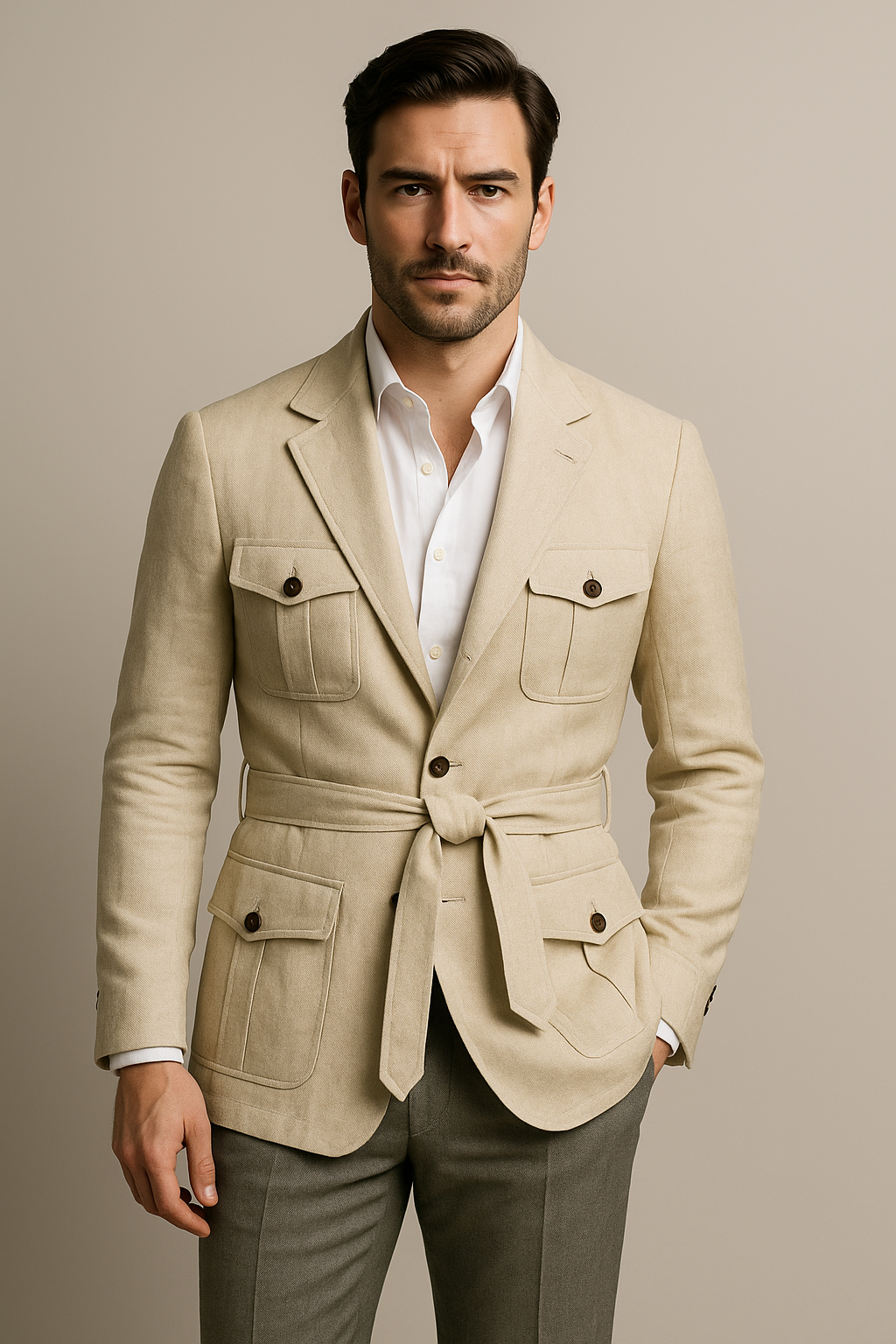Men's Suit Styles.
Choosing a suit is about more than just looking good — it’s about wearing something that reflects your identity. On this page, we break down the most popular suit styles, their defining features, and what occasions best suit them. Consider this your guide to making confident, informed choices for formal, semi-formal, and statement dressing.
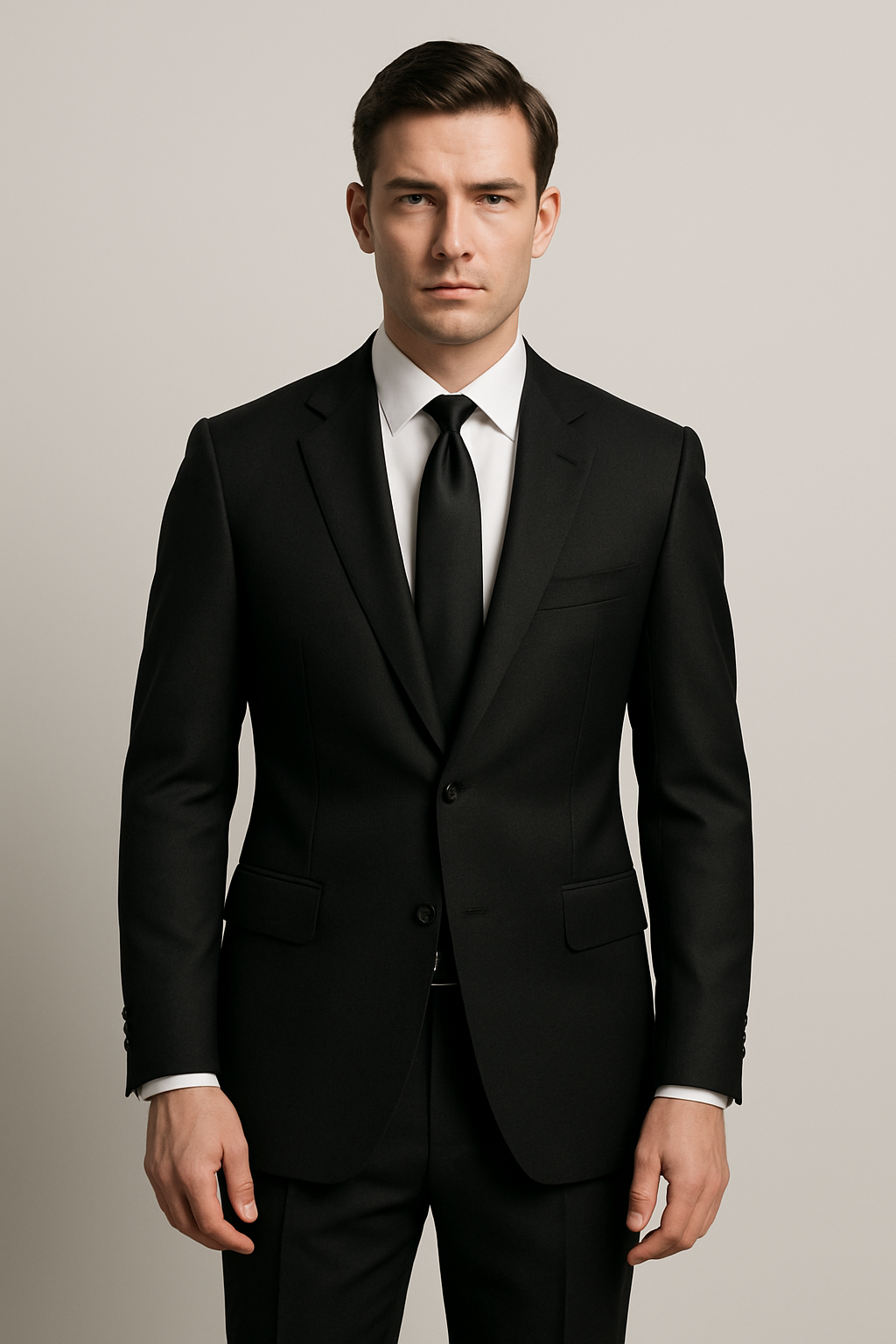
The Modern Suit.
A sharp, contemporary suit designed with a slimmer cut for today’s professional. It blends refinement with clean, minimal lines.
Visual distinctions: Narrow lapels, slim silhouette, shorter jacket length, often two-button.
When to wear: Business meetings, corporate settings, cocktail events, or modern weddings.
Typical colors: Navy, charcoal, black, or mid-grey — versatile staples for every wardrobe.
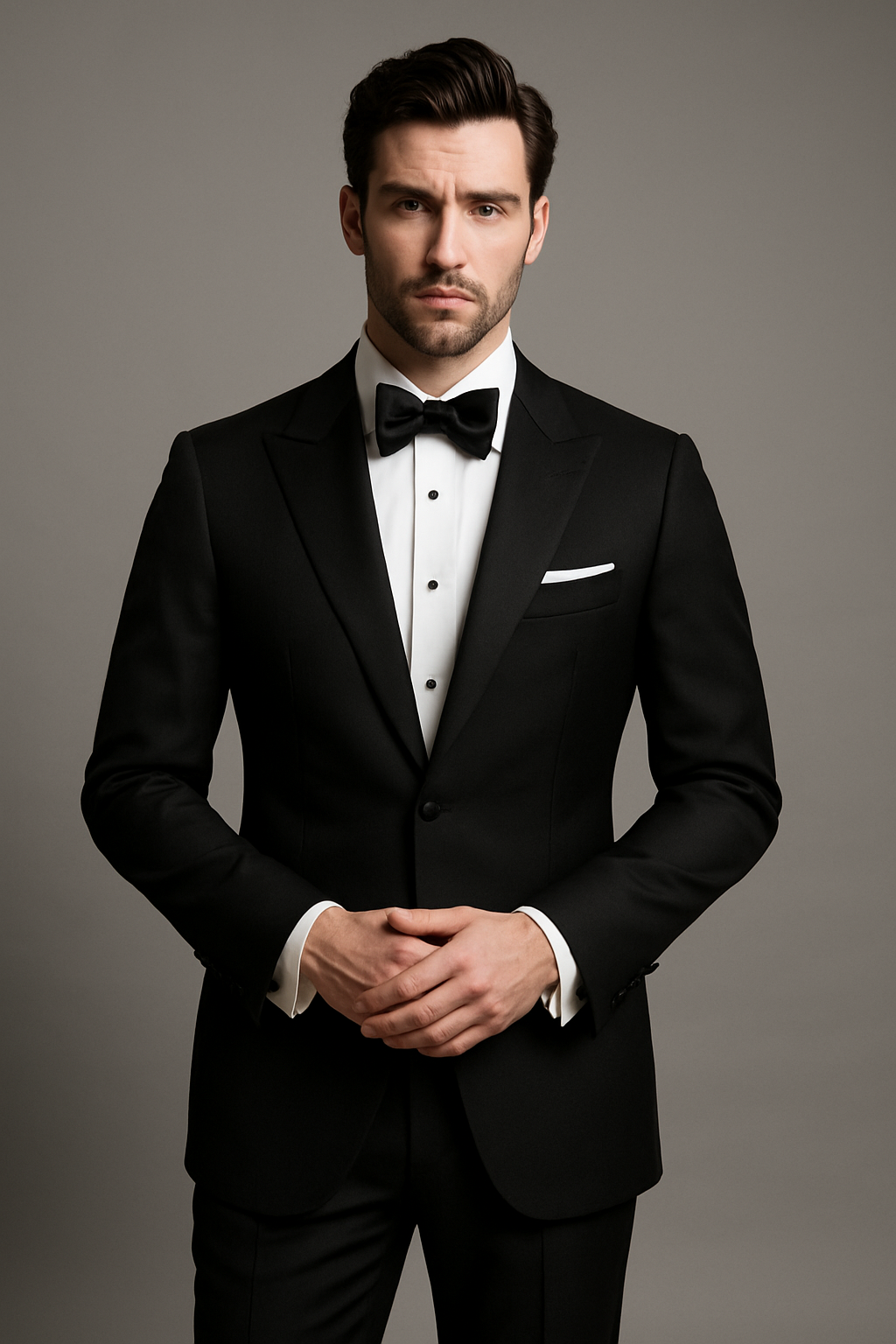
The Tuxedo.
The tuxedo is the ultimate in formal eveningwear, defined by its satin lapels, sleek tailoring, and timeless sophistication.
Visual distinctions: Satin facing on lapels, buttons, and pocket trims; always worn with a crisp dress shirt.
When to wear: Black-tie weddings, gala dinners, red-carpet events, or any evening celebration after 6pm.
Typical colors: Classic black or midnight blue, often paired with a white shirt and black bow tie.
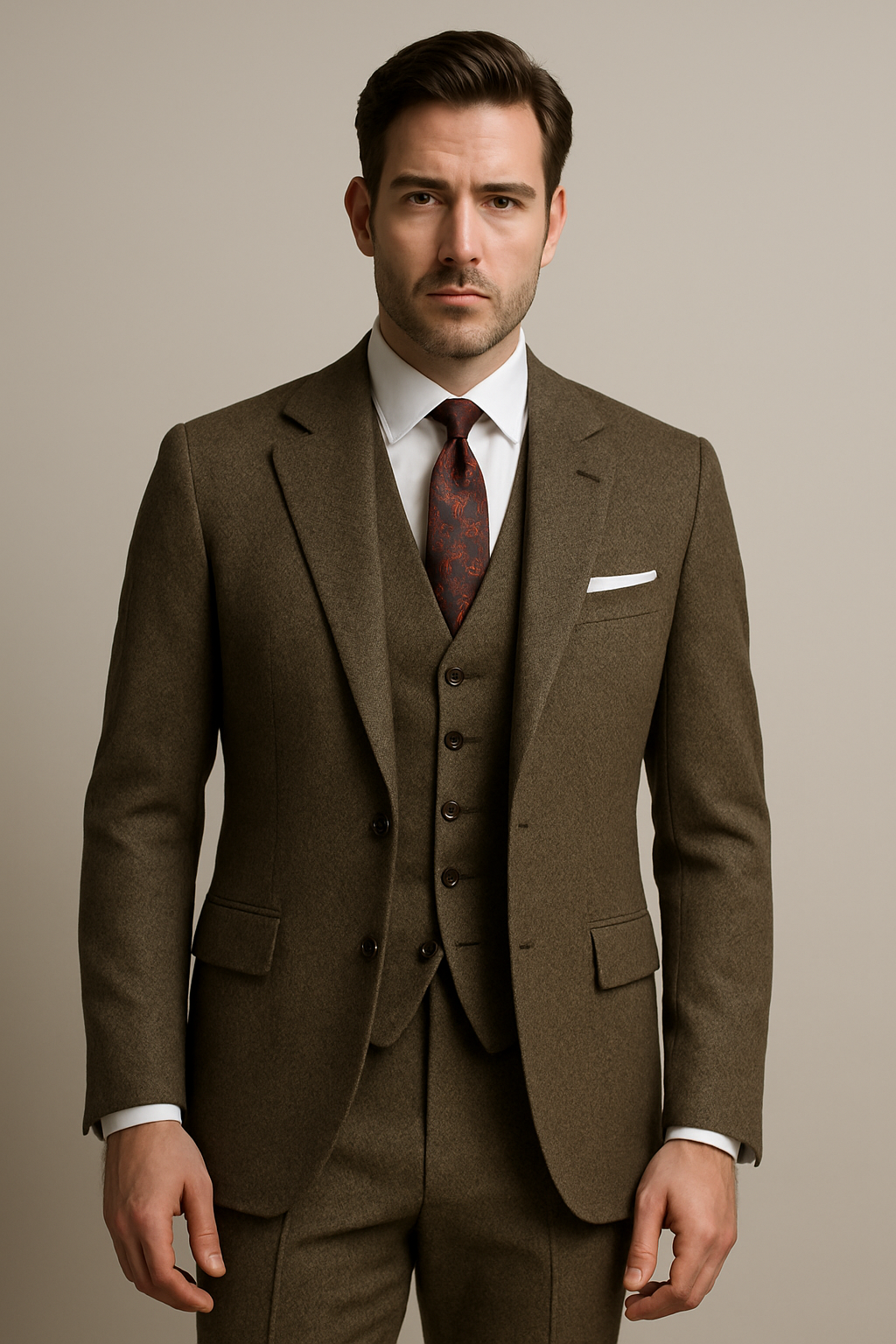
The Classic British Suit.
Inspired by Savile Row tradition, the heritage suit emphasizes structure and elegance with classic fabrics.
Visual distinctions: Strong shoulders, slightly longer jacket length, flap pockets, tweed or herringbone textures.
When to wear: Autumn and winter occasions, countryside weddings, or formal daytime events.
Typical colors: Brown, grey, olive, and muted check patterns.
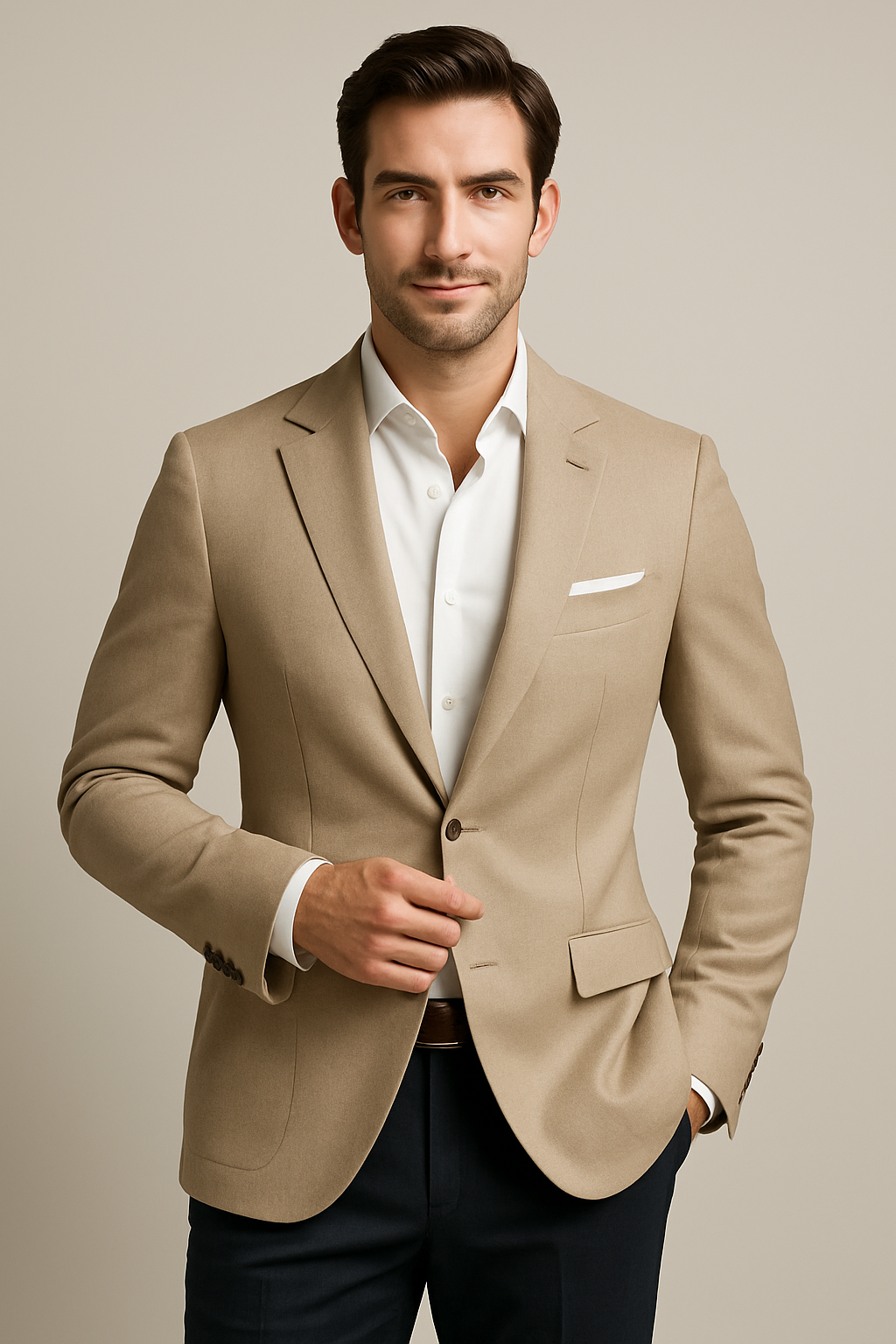
The Blazer.
A versatile choice that balances elegance with ease, perfect for smart-casual occasions.
Visual distinctions: A contrasting blazer and trouser combination, often with an open-collar shirt and no tie.
When to wear: Business-casual meetings, dinner parties, social gatherings, or travel.
Typical colors: Beige, camel, or light grey blazers paired with navy or charcoal trousers.
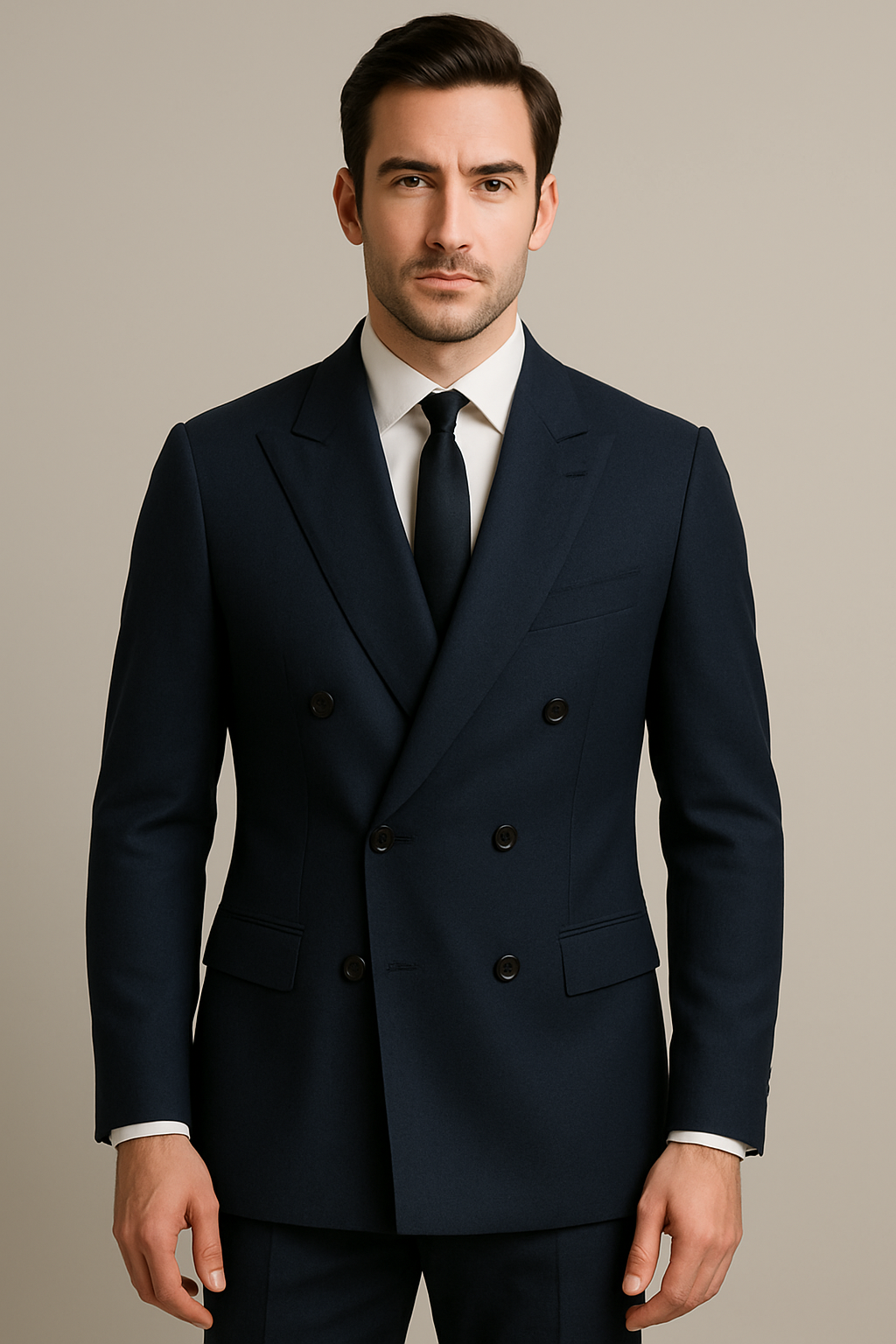
Double-Breasted Suit.
A bold, statement-making suit that exudes confidence and old-school sophistication.
Visual distinctions: Overlapping double-breasted front with wide peak lapels; typically six-button configuration.
When to wear: Evening dinners, business events where presence matters, or stylish weddings.
Typical colors: Navy, charcoal, or pinstripes for a classic look.
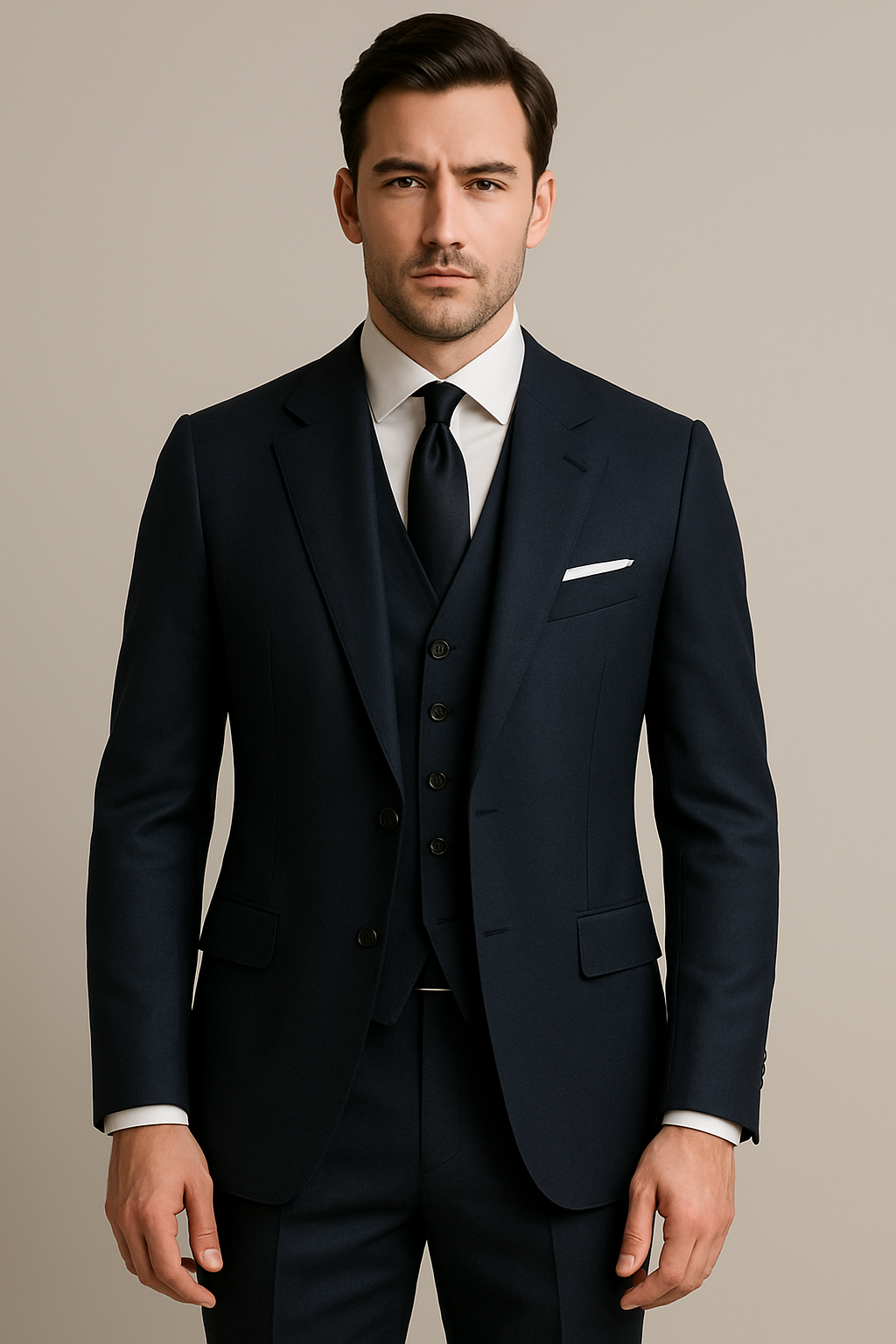
The Three Piece.
A timeless option that adds depth and polish with its waistcoat, ideal for formal occasions.
Visual distinctions: Matching vest (waistcoat) under the jacket, giving a layered and refined look.
When to wear: Weddings, important business meetings, or formal celebrations where sophistication is key.
Typical colors: Navy, charcoal, or grey — often with a subtle pattern for interest.
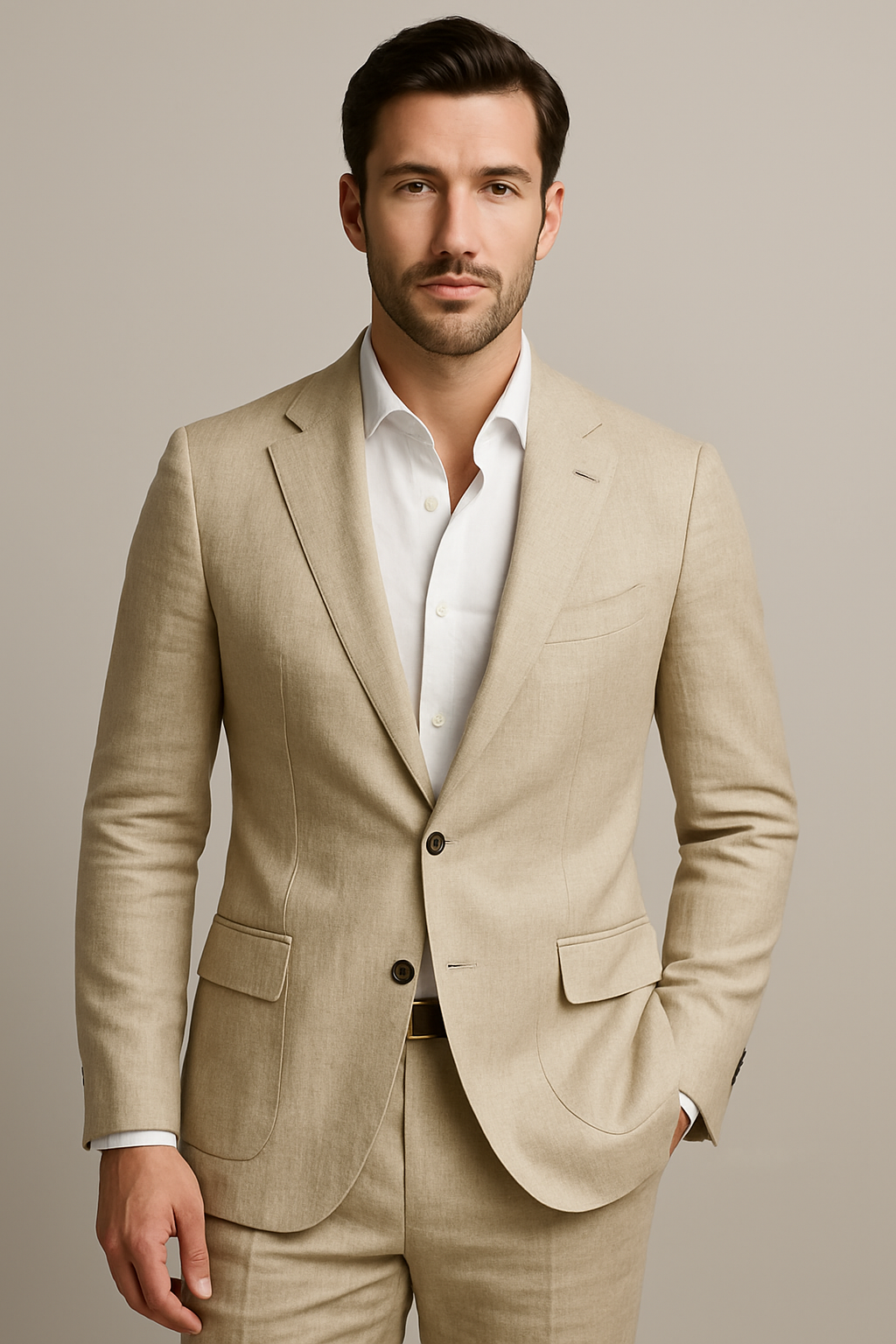
The Linen Suit.
Designed for warm weather, the linen suit is light, breathable, and effortlessly stylish.
Visual distinctions: Linen texture with a relaxed drape and natural creasing, open-collar styling.
When to wear: Outdoor weddings, beach ceremonies, summer parties, or casual daytime events.
Typical colors: Beige, cream, stone, or light grey for a fresh, summery look.
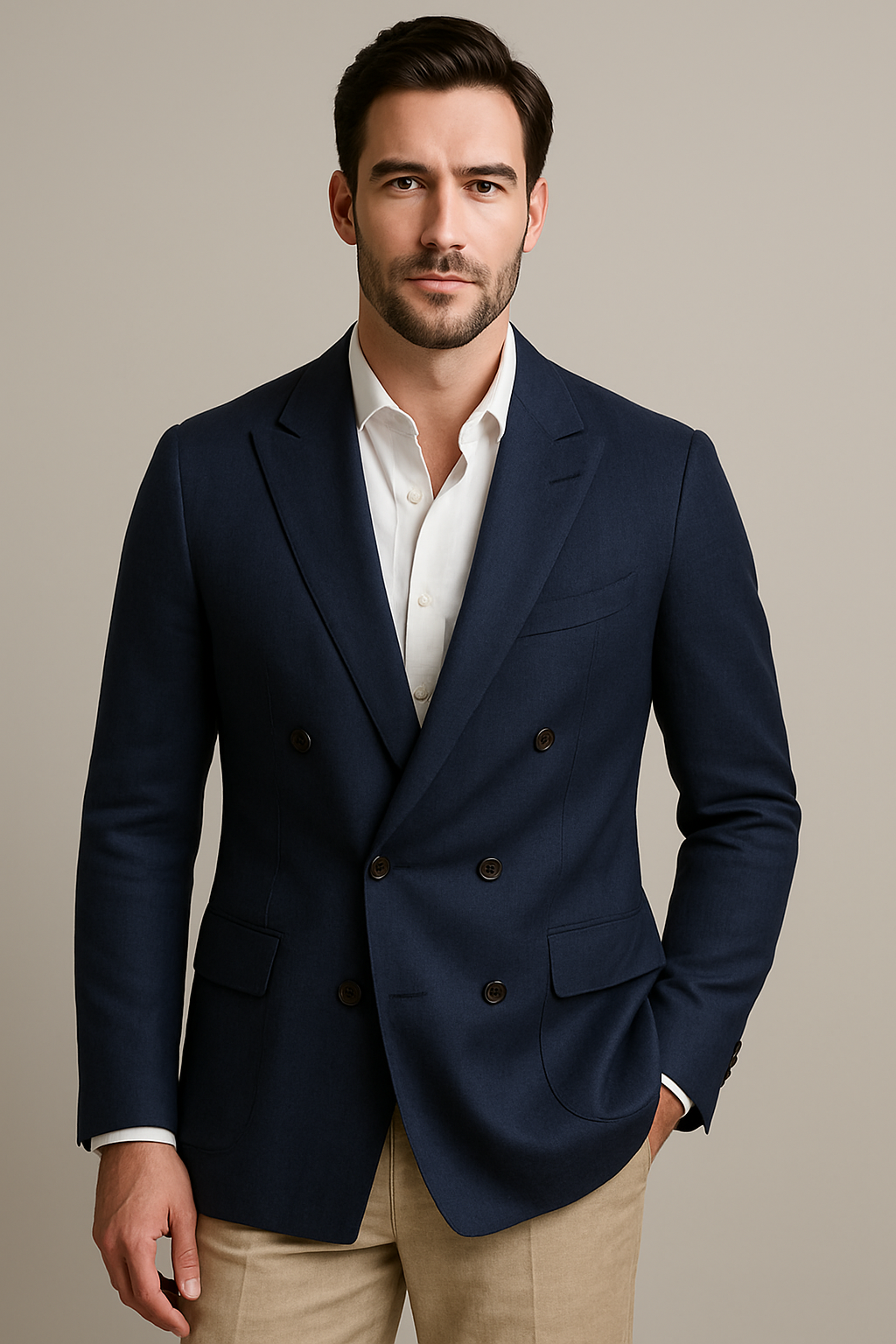
Double Breasted Casual.
A relaxed take on the double-breasted jacket, offering refinement without rigidity.
Visual distinctions: Double-breasted closure with softer tailoring and lighter fabrics, often styled without a tie.
When to wear: Smart-casual dinners, evening drinks, or daytime social events.
Typical colors: Beige, light grey, or navy, paired with contrasting trousers.
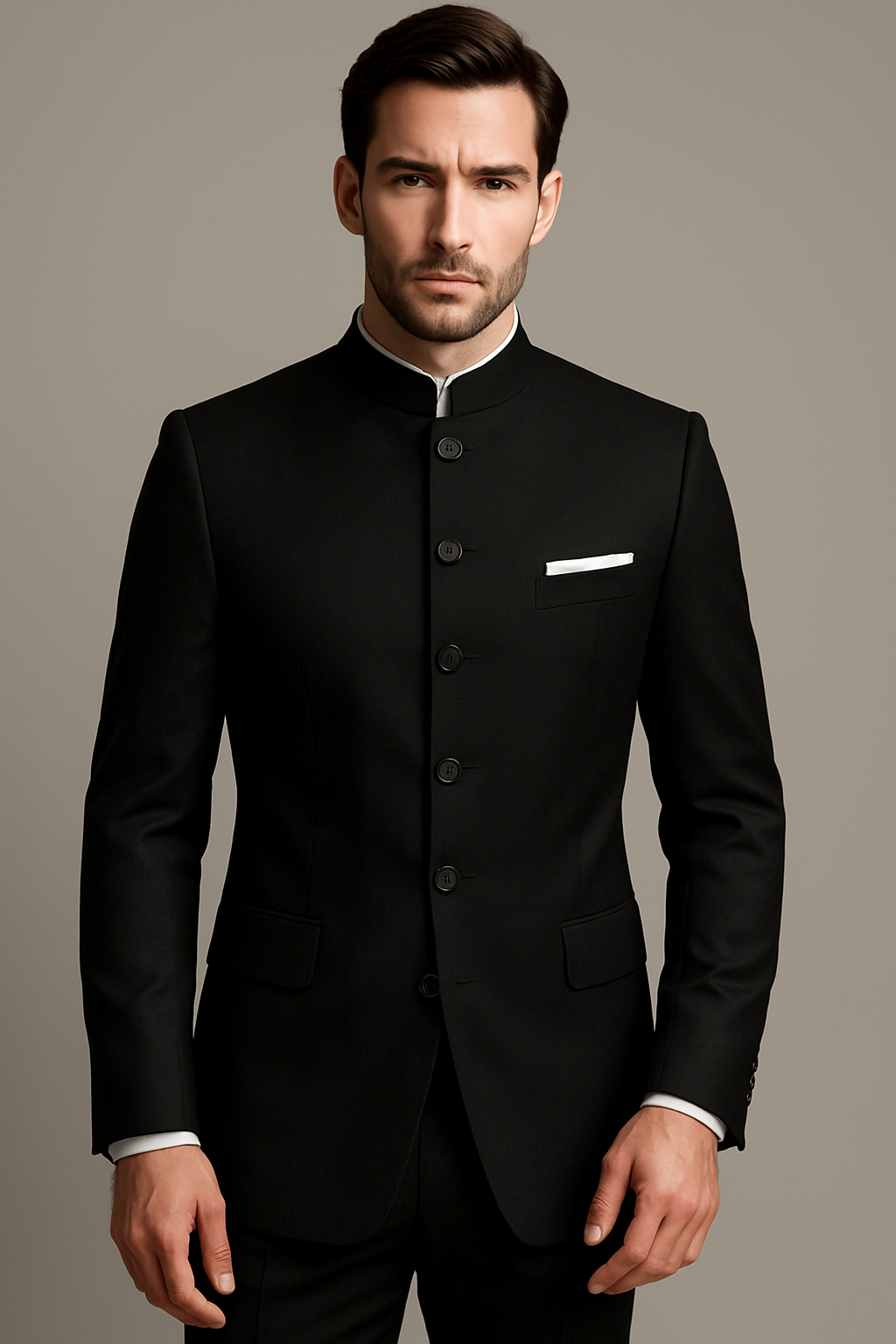
The Mandarin Collar.
A sophisticated alternative to the classic suit, the Mandarin Collar Suit is defined by its sleek, collarless neckline that creates a clean and modern silhouette.
Visual distinctions: No lapels, stand-up band collar, and a buttoned front that gives it a minimalist yet refined look.
When to wear: Ideal for evening events, formal dinners, cultural occasions, or when you want to stand out from the crowd without being overly traditional.
Typical colors: Black, navy, ivory, or charcoal — often paired with a crisp white shirt for maximum impact.
